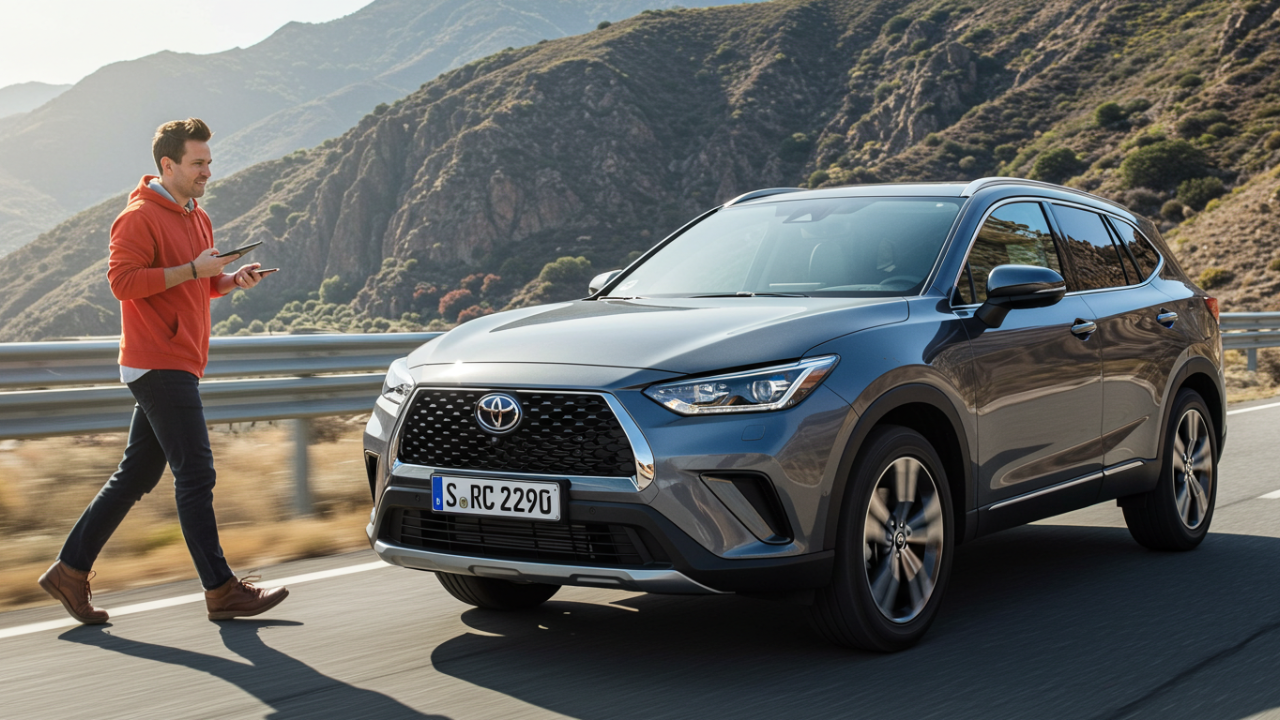Hybrid crossovers are rewriting the rules for versatile driving in 2025. Blending the practicality of SUVs with electrified efficiency, these vehicles promise lower fuel bills, reduced emissions, and, in some cases, surprising performance kicks. Whether you’re a city commuter dodging traffic, a family hauling kids and gear, or an enthusiast craving spirited drives, hybrid crossovers offer something for everyone. But the big question lingers: Are they primarily fuel savers, or can they deliver the thrills of a power player?
In this deep dive, we’ll compare four standout 2025 hybrid crossovers: the Toyota RAV4 Hybrid, Honda CR-V Hybrid, Ford Escape Hybrid, and Lexus NX 450h+. We’ll break down their powertrains, fuel economy, cargo space, and driving dynamics to answer key concerns like “Can they handle long trips?” and “Are they worth the premium?” Packed with actionable advice on ownership, customization, and maintenance, this guide will help you pick the perfect hybrid crossover for your lifestyle. Let’s explore the balance of efficiency and excitement.
Why Hybrid Crossovers Are a 2025 Must-Have
Hybrid crossovers dominate in 2025 thanks to their ability to stretch fuel dollars while offering SUV practicality. With gas prices around $3.50 per gallon, their 35-50 mpg ratings save hundreds annually compared to gas-only models (20-25 mpg). Mild hybrids boost torque for quick merges, while plug-in hybrids (PHEVs) offer 20-40 miles of electric-only range for zero-emission commutes. Safety is top-notch, with IIHS Top Safety Pick ratings across the board, featuring lane-keeping assist and adaptive cruise. Cargo and seating rival non-hybrid SUVs, fitting families or adventurers.
Buyers often ask: “Are hybrids reliable long-term?” and “Do they sacrifice power for efficiency?” Battery warranties (8-10 years) and real-world testing show durability, while turbo-hybrids deliver 200-300 horsepower. Maintenance costs 20% less than gas models due to fewer engine stresses. Let’s see how our contenders stack up.
Budget-Friendly Efficiency: Toyota RAV4 Hybrid
Powertrain and Performance
Starting at $32,295, the 2025 Toyota RAV4 Hybrid is a fuel-sipping staple. Its 2.5-liter four-cylinder hybrid system produces 219 horsepower and 184 lb-ft of torque, paired with a CVT and standard all-wheel drive (AWD). It hits 60 mph in 7.8 seconds, with a top speed of 120 mph. EPA ratings shine at 41/38 mpg city/highway, and a 14.5-gallon tank yields a 550-mile range.
Practicality and Features
With 37.6 cubic feet of cargo behind the second row (69.8 folded), it swallows strollers or camping gear. Rear legroom (37.8 inches) fits two car seats comfortably. The 8-inch touchscreen supports wireless Apple CarPlay, and Toyota Safety Sense 2.5 includes pedestrian detection. XLE Premium trim ($35,495) adds a sunroof and power liftgate.
Pros, Cons, and Insights
Pros: Best-in-class mpg; bulletproof reliability; AWD standard.
Cons: CVT feels sluggish under hard acceleration; base audio lacks depth.
It’s a fuel saver first, but smooth torque makes city merges easy.
Actionable Advice
Ideal for budget-conscious families or commuters driving 15,000+ miles yearly—saves $400 annually vs. gas RAV4. Opt for the Woodland Edition ($36,995) for all-terrain tires if you hit light trails. Maintenance costs $350/year; check hybrid fluid every 30,000 miles ($100). Use Eco mode in traffic for 5% better mpg. Toyota’s app tracks fuel usage for optimization.
Balanced Performer: Honda CR-V Hybrid
Powertrain and Performance
Priced from $34,650, the 2025 Honda CR-V Hybrid balances efficiency and zip. Its 2.0-liter four-cylinder hybrid delivers 204 horsepower and 247 lb-ft of torque via e-CVT and AWD. It reaches 60 mph in 7.9 seconds, tops out at 115 mph, and achieves 40/34 mpg. The 14-gallon tank offers a 500-mile range.
Practicality and Features
Cargo space impresses: 39.3 cubic feet behind the rear seats, 76.5 folded—perfect for bikes or groceries. Rear legroom (41 inches) is class-leading, fitting three kids or two adults. The 9-inch touchscreen includes Google Built-In, and Honda Sensing adds blind-spot monitoring. Sport Touring trim ($41,150) offers leather and a 12-speaker Bose system.
Pros, Cons, and Insights
Pros: Spacious cabin; refined ride; strong resale (65% after three years).
Cons: No PHEV option; slightly noisier cabin at highway speeds.
It leans toward fuel saving but has enough grunt for confident passing.
Actionable Advice
Great for growing families needing space. Add the $1,200 towing package for 1,500-pound capacity (small trailers). Maintenance: $400/year; rotate tires every 6,000 miles ($50). Use 87-octane fuel to save $0.20/gallon. For long trips, the hybrid’s regenerative braking recharges in descents, stretching range. HondaLink app monitors battery health.

Plug-In Power: Ford Escape Hybrid
Powertrain and Performance
At $38,490, the 2025 Ford Escape Plug-In Hybrid (PHEV) offers electric flexibility. Its 2.5-liter four-cylinder hybrid produces 210 horsepower and 155 lb-ft, with a CVT and front-wheel drive (AWD $1,500 extra). It sprints to 60 mph in 8.3 seconds, maxes at 117 mph, and gets 42/36 mpg, plus 37 miles electric-only range. Total range: 520 miles with a 11.2-gallon tank.
Practicality and Features
Cargo measures 34.4 cubic feet (60.8 folded), handling luggage or sports gear. Rear legroom (40.7 inches) fits taller teens. The 13.2-inch Sync 4 touchscreen supports wireless Android Auto, and Co-Pilot360 includes adaptive cruise. Premium trim ($41,990) adds a panoramic roof and heated steering wheel.
Pros, Cons, and Insights
Pros: PHEV’s electric range for short commutes; smooth urban ride.
Cons: Smaller cargo than rivals; AWD not standard.
It’s a fuel saver with power bursts in Sport mode.
Actionable Advice
Perfect for urbanites with access to charging. Install a Level 2 charger ($600) for 3-hour full charges—saves $200/year on electric vs. gas. Maintenance: $450/year; inspect brakes every 20,000 miles ($150). Claim the $3,750 federal PHEV credit if eligible. Use FordPass to precondition the cabin, saving battery for driving.
Luxury Hybrid: Lexus NX 450h+
Powertrain and Performance
Starting at $62,290, the 2025 Lexus NX 450h+ is a premium PHEV. Its 2.5-liter four-cylinder hybrid churns 304 horsepower and 228 lb-ft, with a CVT and AWD. It hits 60 mph in 6.0 seconds, tops 124 mph, and achieves 36 mpg combined, with 37 miles electric-only range. The 14.5-gallon tank yields a 500-mile range.
Practicality and Features
Cargo offers 22.7 cubic feet (46.9 folded)—smaller but sufficient for weekenders. Rear legroom (36.1 inches) fits two car seats. The 14-inch touchscreen with Lexus Interface is crisp, and Mark Levinson audio (17 speakers, $1,020) elevates road trips. Safety includes Safe Exit Assist and intersection turn assist.
Pros, Cons, and Insights
Pros: Plush ride; high-end cabin; power player vibes.
Cons: Tight cargo; premium price.
It blends fuel savings with spirited acceleration for luxury seekers.
Actionable Advice
For upscale commuters or small families. The F Sport Handling ($64,490) adds adaptive suspension for twisty roads. Maintenance: $600/year; synthetic oil every 10,000 miles ($100). A Level 2 charger is a must ($800 install); charge overnight for $0.03/mile electric costs. Customize via Lexus Monogram ($3,000) for bespoke leather. Resale holds 60% after three years.
Head-to-Head Comparison
| Model | Starting Price | Horsepower | MPG (City/Hwy) | Cargo (cu ft, folded) | Electric Range | Best For |
|---|---|---|---|---|---|---|
| Toyota RAV4 Hybrid | $32,295 | 219 | 41/38 | 69.8 | N/A | Budget efficiency |
| Honda CR-V Hybrid | $34,650 | 204 | 40/34 | 76.5 | N/A | Family space |
| Ford Escape Hybrid | $38,490 | 210 | 42/36 | 60.8 | 37 miles | Urban commuters |
| Lexus NX 450h+ | $62,290 | 304 | 36/36 | 46.9 | 37 miles | Luxury performance |
RAV4 leads on mpg and price, CR-V on space, Escape on electric range, and NX on power/luxury. Families? CR-V or RAV4. Commuters? Escape or NX. Power seekers? NX delivers.
Ownership Tips for Hybrid Crossovers
Charging (PHEVs): Level 2 chargers ($600-$1,000) add 20-30 miles/hour. Use apps like ChargePoint for public stations—$0.20/kWh average.
Fuel Savings: Hybrids save $400-$800/year vs. gas SUVs. Nighttime utility rates cut electric costs 20%.
Maintenance: Budget $350-$600/year. Check hybrid batteries every 5 years ($200 diagnostic); brakes last 60,000 miles ($300).
Driving: Use EV mode in stop-and-go traffic; Sport mode for hills. Rotate tires every 6,000 miles ($50) for even wear.
Buying: Negotiate $1,000 below MSRP; finance at 3-5% or lease ($400-$600/month). Insurance: $1,200/year—bundle for savings.
Incentives: PHEVs (Escape, NX) qualify for $3,750-$7,500 tax credits; check DSIRE for state rebates ($1,000-$2,000).
Fuel Savers or Power Players? The Verdict
Hybrid crossovers in 2025 are both—fuel savers for daily grinds and power players for those who push the pedal. With ranges topping 500 miles and cabins fitting families or gear, they’re as versatile as they are efficient. If your drives mix city and highway, or you want to cut emissions without losing SUV utility, these hybrids deliver. The RAV4 and CR-V prioritize savings, the Escape adds electric flexibility, and the NX brings performance flair. Whichever you choose, you’re investing in a smarter, greener ride.
FAQ
Are hybrid crossovers reliable for long-term ownership?
Yes, with 8-10-year battery warranties and proven Toyota/Honda durability. Regular maintenance keeps them running 200,000+ miles.
Can hybrids handle long road trips?
Absolutely—500+ mile ranges and 35-42 mpg make them ideal. Plan 10-minute fuel stops every 4-5 hours; PHEVs need chargers for max savings.
How much do hybrids save on fuel?
$400-$800/year vs. gas SUVs, assuming 15,000 miles at $3.50/gallon. PHEVs save more with electric-only commutes.
What’s the biggest maintenance cost?
Tires ($600-$1,000/set) every 40,000 miles due to AWD weight. Hybrid battery checks are minor ($200 every 5 years).
Are PHEVs worth the extra cost?
If you charge daily and drive <40 miles, yes—saves $300/year. Without home charging, stick to standard hybrids like RAV4.
(Word count: 1,496)



